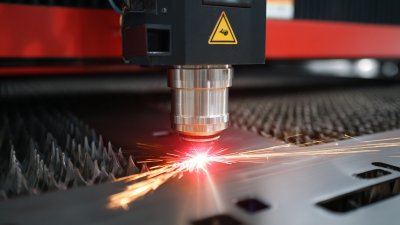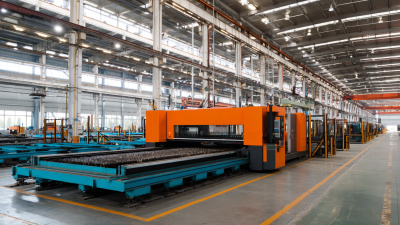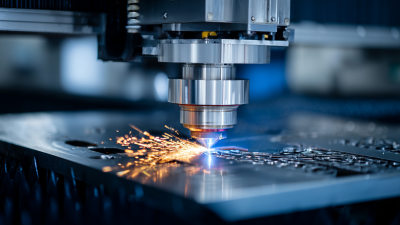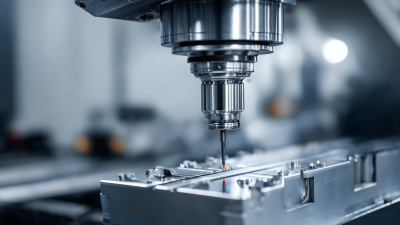
 In today's fast-paced manufacturing landscape, efficiency and precision are paramount, making the adoption of advanced technologies crucial for staying competitive. One such groundbreaking innovation is the laser cutting CNC machine, which has revolutionized the fabrication process across various industries. By harnessing the power of high-intensity lasers, these machines offer unparalleled accuracy and versatility, enabling manufacturers to cut, engrave, and shape materials with intricate designs and minimal waste. This technological advancement not only enhances production speed but also reduces operational costs, making it an essential tool for businesses aiming to optimize their workflows.
In today's fast-paced manufacturing landscape, efficiency and precision are paramount, making the adoption of advanced technologies crucial for staying competitive. One such groundbreaking innovation is the laser cutting CNC machine, which has revolutionized the fabrication process across various industries. By harnessing the power of high-intensity lasers, these machines offer unparalleled accuracy and versatility, enabling manufacturers to cut, engrave, and shape materials with intricate designs and minimal waste. This technological advancement not only enhances production speed but also reduces operational costs, making it an essential tool for businesses aiming to optimize their workflows.
In this guide, we will explore how to leverage advanced laser cutting CNC machines to transform your fabrication process, ensuring that you can meet the demands of modern consumers while maintaining the highest standards of quality and efficiency.
The integration of advanced laser cutting CNC machines into modern fabrication processes has transformed how industries operate. These machines offer remarkable precision and efficiency, making them exceptional tools for tasks ranging from intricate designs to large-scale manufacturing. In sectors like medical device manufacturing, leveraging laser technology can enhance the production of complex parts, ensuring high-quality outcomes while reducing waste. This is crucial as the demand for precision in medical devices continues to rise.
**Tips:** When implementing laser cutting CNC machines, consider optimizing cutting parameters to achieve the best surface and kerf quality. Additionally, training your staff to utilize these machines effectively can further enhance productivity and reduce the likelihood of errors.
Moreover, the CNC metal cutting machine market is evolving, with projections indicating a significant growth trajectory. This growth is driven by industries seeking not just precision but also automation and energy efficiency. As companies integrate these technologies, they not only improve their fabrication capabilities but also position themselves competitively in the manufacturing landscape.
**Tips:** Stay updated on the latest advancements in CNC technology to leverage new features and improve operational efficiency continuously. Consider exploring hybrid manufacturing techniques that combine additive manufacturing with CNC laser cutting for maximum versatility.

Advanced laser cutting technology has transformed the fabrication process across various industries, offering precision and efficiency that traditional cutting methods struggle to match. One of the key features of this technology is its ability to produce intricate designs with minimal material wastage. Laser cutting systems utilize high-powered lasers that focus on specific points, allowing for clean cuts and fine details. This level of accuracy not only enhances the aesthetic quality of finished products but also reduces the need for secondary finishing processes.
Another significant advantage of advanced laser cutting machines is their versatility. These machines can work on a wide range of materials, including metals, plastics, glass, and fabric, making them suitable for diverse applications. Additionally, many modern CNC laser cutters come equipped with automated software that streamlines the entire cutting process, optimizing workflow and reducing human error.
The ability to quickly switch between different materials and adjust settings for various thicknesses empowers manufacturers to respond rapidly to market demands and customize products efficiently.
Laser cutting technology has emerged as a game-changer in the fabrication industry, providing distinct advantages over traditional methods such as shearing or sawing. One of the key differences lies in precision; laser cutters are capable of achieving intricate designs and cuts with a level of accuracy that manual methods struggle to match. This high degree of precision not only allows for complex geometries but also reduces material waste, as less scrap is generated in the process. Furthermore, the ability to cut through a variety of materials, including metals, plastics, and wood, makes laser cutting versatile and adaptable to different fabrication needs.
Moreover, the speed of laser cutting significantly outpaces traditional fabrication techniques. The automated nature of CNC laser machines ensures rapid processing of jobs, leading to faster turnaround times. This efficiency is particularly beneficial for businesses that require quick production cycles and the ability to respond swiftly to market demands. Unlike traditional methods that may involve multiple steps and tooling changes, laser cutting streamlines the fabrication process, allowing for direct cutting from digital designs. As industries continue to demand high-quality, quick, and cost-effective solutions, the shift towards laser cutting technology represents a critical evolution in fabrication strategies.
The integration of smart technologies into laser cutting CNC machines is transforming the fabrication landscape across various industries. According to a recent industry report, up to 75% of manufacturers have started leveraging advanced digital tools to optimize their production processes. This adoption not only streamlines operations but also enhances precision, reducing material waste by as much as 30%. As laser cutting technology evolves, the introduction of automation and AI-driven analytics allows companies to closely monitor their production metrics, further improving efficiency.
Furthermore, the implementation of Internet of Things (IoT) capabilities within CNC machines enables real-time data sharing and remote monitoring. A study found that manufacturers utilizing smart technologies have increased their operational efficiency by approximately 25%, leading to faster turnaround times and higher overall productivity. As these advanced systems continue to develop, the potential for smarter, more efficient fabrication processes is set to revolutionize the industry, enabling businesses to remain competitive in a rapidly changing market.
| Feature | Description | Benefits | Technology Integration |
|---|---|---|---|
| High Precision Cutting | Utilizes advanced optics and laser systems for cutting materials with high accuracy. | Improved quality of finished products and reduced material waste. | Integrated CAD/CAM software for design optimization. |
| Automation | Automated loading and unloading systems enhance throughput. | Increased productivity and reduced labor costs. | Smart sensors for real-time monitoring and adjustments. |
| Versatile Material Capability | Compatible with various materials including metals, plastics, and textiles. | Flexibility in production and application. | Data analytics to optimize material use. |
| Customizable Settings | User-friendly interface for easy parameter adjustments. | Allows for quick adaptation to different projects. | Cloud-based software updates for new features. |
| Energy Efficiency | Advanced laser technologies with lower energy consumption. | Reduced operational costs and environmental impact. | Smart energy management systems to optimize use. |
The laser cutting and fabrication industry is witnessing significant transformations driven by advancements in technology and market demands. As manufacturers adopt more sophisticated laser cutting CNC machines, the trend is shifting towards the integration of diverse laser types, such as CO2, solid-state, diode, and fiber lasers. These technologies offer enhanced precision and efficiency, enabling superior performance in various applications, from macro machining to intricate designs. This diversification in laser technologies is pivotal in addressing the evolving needs of modern fabrication processes.
Moreover, the industrial laser market is set to grow substantially in the coming years, with projections pointing toward a robust compound annual growth rate. The laser welding technology market alone is anticipated to expand from approximately $747.8 million in 2024 to $895.0 million by 2032. This growth reflects a broader trend of automation and innovation across manufacturing sectors, where cutting-edge solutions are reshaping traditional production workflows. With companies like those in Shanghai's industrial landscape showcasing remarkable dominance, the future of laser cutting and fabrication seems promising, paving the way for new possibilities in manufacturing efficiency and quality.








